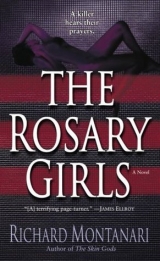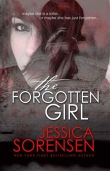
Текст книги "The Rosary Girls"
Автор книги: Richard Montanari
Жанры:
Маньяки
,сообщить о нарушении
Текущая страница: 10 (всего у книги 23 страниц)
21
TUESDAY, 8:25 A M
Bartram Gardens was the oldest botanical garden in the United States, having been frequented by Benjamin Franklin, after whom John Bartram, the garden’s founder, had named a genus of plant. Located at Fifty-fourth Street and Lindbergh, the forty-five-acre site boasted a
landscape of wildflower meadows, river trails, wetlands, stone houses, and farm buildings. Today it hosted death.
A police cruiser and an unmarked were parked near the River Trail when Byrne and Jessica arrived. A perimeter had already been established around what appeared to be half an acre of daffodils. As Byrne and Jessica approached the scene, it was easy to see how the body could have been overlooked.
The young woman lay on her back amid the bright flowers, her hands clasped in prayer at her waist, holding a black rosary. Jessica could see immediately that one of the decades of beads was missing.
Jessica looked around. The body was placed about fifteen feet into the field and, except for a narrow path of tramped flowers, probably caused by the medical examiner, there was no obvious ingress into the field. The rain had certainly washed away any footprints. If there was an abundance of forensic possibilities in the row house on Eighth, out here, after hours of torrential rain, there would be none.
Two detectives stood at the edge of the immediate crime scene: a slender Hispanic man in an expensive-looking Italian suit and a shorter, powerfully built man whom Jessica recognized. The cop in the Italian suit seemed equally concerned with the rain ruining his Valentino as with the investigation. At least at the moment.
Jessica and Byrne approached, considered the victim.
The girl wore a navy blue and green plaid skirt, blue knee socks, penny loafers. Jessica recognized it as the uniform belonging to Regina High School, a Catholic girls school on Broad Street in North Philly. She had raven-black hair cut into a pageboy style and, from what Jessica could see, had about a half dozen piercings in her ears and one in her nose, piercings that bore no jewelry. It was clear that this girl played the Goth role on weekends, but, due to the strict dress code at her school, wore none of her hardware in class.
Jessica looked at the young woman’s hands and although she didn’t want to accept the truth, there it was. The hands were bolted together in prayer.
Out of earshot of the others, Jessica turned to Byrne and asked, softly: “Have you ever had a case like this before?”
Byrne didn’t have to think long about it. “No.”
The two other detectives approached, thankfully bringing their big golf umbrellas with them.
“Jessica, this is Eric Chavez, Nick Palladino.”
Both men nodded. Jessica returned the greeting. Chavez was the Latin pretty boy, long lashes, smooth skin, midthirties. She had seen him at the Roundhouse the day before. It was clear that he was the unit’s fashion plate. Every squad had one: the type of cop who, on a stakeout, would bring along a fat wooden hanger on which to hang his suit coat in the backseat, along with a beach towel he would tuck into his shirt collar when he ate the crap food you were forced to eat on a stakeout.
Nick Palladino was well dressed, too, but in a South Philly style– leather coat, tailored slacks, polished loafers, gold ID bracelet. He was about forty, with deep-set dark chocolate eyes, stone-set features; his
140 Richard montanari
black hair was combed straight back. Jessica had met Nick Palladino a few times before; he had partnered with her husband in Narcotics before moving over to Homicide.
Jessica shook hands with both men. “Nice to meet you,” she said to Chavez.
“Likewise,” he responded.
“Nice to see you again, Nick.”
Palladino smiled. There was much danger in that smile. “How are you, Jess?”
“I’m good.”
“The family?”
“All good.”
“Welcome to the Show,” he added. Nick Palladino had been with the squad less than a year himself, but he was solid blue. He had probably heard about her and Vincent separating, but he was a gentleman. Now was neither the time nor place.
“Eric and Nick work out of the Fugitive Squad,” Byrne added.
The Fugitive Squad was one-third of the Homicide Unit. Special Investigations and the Line Squad—that section that handled the new cases—were the other two. When a big case came along, or whenever the wheel began to spin out of control, every homicide cop caught.
“Any ID?” Byrne asked.
“Nothing yet,” Palladino said. “Nothing in her pockets. No purse or wallet.”
“She went to Regina,” Jessica said.
Palladino wrote it down. “That’s the school on Broad?”
“Yeah. Broad and CB Moore.”
“This the same MO as your case?” Chavez asked.
Kevin Byrne just nodded.
The idea, the very notion, that they might be up against a serial killer set all their jaws tight, throwing an even heavier pall over the day.
It had been less than twenty-four hours since this scene had played out in a dank and putrid basement of a row house on Eighth Street, and here they were again in a lush garden of cheerful flowers.
Two girls.
Two dead girls.
All four detectives watched as Tom Weyrich knelt next to the body. He pushed up the girl’s skirt, examined her.
When he stood and turned to look at them, his face was grim. Jessica knew what it meant. This girl had suffered the same indignity in death as had Tessa Wells.
Jessica looked at Byrne. There was a deep anger rising within him, something primal and unrepentant, something that reached far beyond the job, his sense of duty.
A few moments later Weyrich joined them.
“How long has she been here?” Byrne asked.
“At least four days,” Weyrich said.
Jessica did the math and a cold frost crept over her heart. This girl was dumped here right around the time Tessa Wells was kidnapped. This girl was killed first.
One decade of beads was missing from this girl’s rosary. Two were missing from Tessa’s.
Which meant that, of the hundreds of questions that floated above them, like the dense gray clouds, there was one truth here, one reality, one horrific fact apparent in this morass of uncertainties.
Someone was killing the Catholic schoolgirls of Philadelphia.
From all appearances, the rampage had just begun.
part three 22
TUESDAY, 12:15 PM
The Rosary Killer task force was assembled by noon.
As a rule, task forces were organized and authorized by the big bosses in the department, and always after an assessment of the political impact of the victims. Despite all the rhetoric regarding how all homicides are equal, manpower and resources are always made more readily available when the victims are important. If someone is knocking off drug dealers or gangbangers or streetwalkers, it’s one thing. If someone is killing Catholic schoolgirls, it’s quite another. Catholics vote.
By noon a good deal of the initial legwork and preliminary lab work had been rushed through the channels. The rosaries both girls held in death were identical, available at a dozen religious article retail stores in Philadelphia. Investigators were currently compiling a customer list. The missing beads were not found at either scene.
The preliminary report from the medical examiner’s office concluded that the killer had used a carbon bit drill to bore the hole in the hands of the victims, and that the bolt used to secure their hands together was also a common item, a four-inch galvanized carriage bolt available at any Home Depot, Lowe’s, or corner hardware store.
No fingerprints were found on either victim.
The cross on Tessa Wells’s forehead was of blue chalk. The lab had not yet concluded a type. There was trace evidence of the same material on the second victim’s forehead. In addition to the small William Blake print found on Tessa Wells, there was also an object found clasped between the hands of the other victim. It was a small segment of bone, approximately three inches in length. It appeared to be very sharp, and had not yet been identified by type or species. These two facts were not given to the media.
Neither was the fact that both victims were drugged. But now there was new evidence. In addition to the midazolam, the lab had confirmed the presence of an even more insidious drug. Both victims had a drug called Pavulon in their systems, a powerful paralytic that induced paralysis in the victim but did nothing for pain.
Reporters from the Inquirer and The Daily News, as well as the local television and radio stations, had so far been cautious about calling the murders the work of a serial killer, but there was no such restraint with The Report, the birdcage liner published out of two cramped rooms on Sansom Street.
who is killing the rosary girls? screamed the headline on their website.
The task force met in the common room on the first floor of the Roundhouse.
There were six detectives in all. In addition to Jessica and Byrne, there was Eric Chavez, Nick Palladino, Tony Park, and John Shepherd, the latter two detectives from the Special Investigations Unit.
Tony Park was Korean American, a longtime veteran of the Major Case Squad. The Auto Unit was part of Major Case, and Jessica had worked with Tony before. He was in his midforties, quick and intuitive, a family man. She had always known he would make his way to Homicide.
John Shepherd was an all-star point guard for Villanova in the early 1980s. Denzel-handsome and just graying around the temples, at an intimidating six eight he had his conservative suits custom tailored at Boyds on Chestnut Street. Jessica had never seen him without a tie.
Whenever a task force was assembled, the effort was made to staff it with detectives who brought a unique ability to the table. John Shepherd was good “in the room,” a seasoned and skilled interrogator. Tony Park was a wizard with databases—NCIC, AFIS, ACCURINT, PCBA. Nick Palladino and Eric Chavez were good on the street. Jessica wondered what she brought to the table, hoping it was something other than her gender. She knew she was a born organizer, good with coordinating, arranging, scheduling. She hoped this would be the opportunity to prove it.
Kevin Byrne headed the task force. Even though he was clearly the right person for the job, Byrne had told Jessica that it had taken every bit of his persuasive powers to get Ike Buchanan to give it to him. Byrne knew that it wasn’t any lack of confidence in his abilities, but rather that Ike Buchanan had to think about the bigger picture, that being the possibility of another firestorm of negative press if things, God forbid, went wrong the way they had in the Morris Blanchard case.
Ike Buchanan, as supervisor, would act as liaison to the big bosses, but Byrne would run the briefings and submit the status reports.
Byrne stood at the assignment desk as the team assembled, taking any available seat in the cramped space. Jessica thought Byrne looked a little shaky, a little burned around the cuffs. She had only known him a short while, but he hadn’t struck her as the kind of cop to get rattled in a situation like this. It had to be something else. He looked like a haunted man.
“We have more than thirty sets of partial prints from the Tessa Wells crime scene, none from the Bartram site,” Byrne began. “No hits yet. Neither victim has yielded any DNA in the form of semen or blood or saliva.”
As he spoke, he placed pictures on the white board behind him. “The underlying signature here is a Catholic schoolgirl being taken right off the street. The killer puts a galvanized-steel bolt and nut through a drilled hole in the center of their hands. He is using a thick nylon thread—probably the sort used in sail making—and is sewing shut their vaginas. He is leaving a mark, in the shape of a cross, on their foreheads, made of a blue chalk. Both victims died of a broken neck.
“The first victim found was Tessa Wells. Her body was discovered in the basement of an abandoned house on Eighth and Jefferson. The second victim found, in a field at Bartram Gardens, had been dead for at least four days. In both instances, the doer wore nonporous gloves.
“Both victims were drugged with a short-acting benzodiazepine called midazolam, which is similar in effect to Rohypnol. In addition, there was a good amount of a drug called Pavulon. We have someone looking into the street availability of Pavulon now.”
“What does this Pavulon do?” Park asked.
Byrne scanned the ME’s report. “Pavulon is a paralytic. It produces skeletal muscle paralysis. Unfortunately, according to the report, for the victim, it has no effect at all on pain threshold.”
“So our boy stabbed and plunged with this midazolam, then injected the Pavulon after the victims were sedated,” John Shepherd said.
“That’s probably how it happened.”
“How available are these drugs?” Jessica asked.
“It seems that this Pavulon’s been around for a while,” Byrne said. “The background report says that it was used in a whole series of animal experiments. In the experiments, researchers thought that because the animal couldn’t move, it wasn’t in pain. They didn’t give them any analgesic or hypnotic. Turns out the animals were in agony. It seems the role of drugs like Pavulon in torture are well known by the NSA/CIA. The amount of psychic horror you could introduce is about as extreme as it gets.”
The implications of what Byrne was saying began to sink in, and it was chilling. Tessa Wells felt everything her killer was doing to her, but could not move.
“There is some street availability of Pavulon, but I think we need to look inside the medical community for a connection,” Byrne said. “Hospital workers, doctors, nurses, pharmacists.”
Byrne taped a pair of photos on the board.
“Our doer is also leaving an object on each victim,” he continued. “In the case of the first victim we found a small piece of bone. In the case of Tessa Wells, a small reproduction of a painting by William Blake.”
Byrne pointed to the two photos on the board, the images of the rosaries.
“The rosary found on the first victim had one set of ten beads– called a decade—missing. The typical rosary has five decades. Tessa Wells’s rosary had two decades missing. As much as we don’t want to do the math here, I think it’s obvious what’s happening. We have to shut this bad actor down, people.”
Byrne leaned against the wall, turned to Eric Chavez. Chavez was the primary on the Bartram Gardens homicide.
Chavez stood, flipped open his notebook, began. “The Bartram victim’s name was Nicole Taylor, seventeen, late of Callowhill Street in the Fairmount section. She was a student at Regina High School on Broad and CB Moore Avenue.
“The preliminary report from the ME’s office is that the cause of death was identical to Tessa Wells, that being a broken neck. As to the other signatures, which were identical as well, we’re running them through VICAP now. We’ll know about the blue chalky material on Tessa Wells’s forehead today. There were only trace amounts on Nicole’s forehead, due to exposure.
“The only recent bruising to the body was on Nicole’s left palm.” Chavez pointed to a photo taped to the white board, a close-up of Nicole’s left hand. “These cuts were made by pressure from her fingernails. Traces of her nail polish were found in the grooves.” Jessica looked at the photo, subconsciously digging her short fingernails into the fleshy part of her hand. There appeared to be half a dozen crescent-shaped indentations on Nicole’s palm, in no discernible pattern.
Jessica imagined the girl clenching her fist in fear. She banished the image. It was not the time for rage.
Eric Chavez proceeded to rebuild Nicole Taylor’s last day.
Nicole left her apartment building on Callowhill at approximately seven twenty on Thursday morning. She walked alone down Broad Street to Regina High School. She attended all her classes, then had lunch with her friend, Domini Dawson, in the cafeteria. At two twenty she left the school, walking south on Broad. She stopped in at the Hole World bodypiercing salon. There, she looked at some jewelry. According to the owner, Irina Kaminsky, Nicole seemed happy, even chattier than usual. Ms. Kaminsky had done all of Nicole’s piercings and said that Nicole had her eye on a ruby nose stud, and was saving for it.
From the salon, Nicole continued up Broad Street to Girard Avenue, then over to Eighteenth Street, entering St. Joseph’s Hospital, where her mother worked as a housekeeping supervisor. Sharon Taylor told the detectives that her daughter was in particularly good spirits because one of her favorite musical groups, Sisters of Mercy, was playing the Trocadero Theatre on Friday night, and she had tickets to see them.
Mother and daughter shared a fruit cup in the cafeteria. They talked about the wedding of one of Nicole’s cousins, which was coming up in June, and the necessity of Nicole to “look like a lady.” It was an ongoing battle between the two, due to Nicole’s penchant for a Goth appearance.
Nicole kissed her mother, then left the hospital at approximately four o’clock, via the Girard Avenue exit.
At that point, Nicole Theresa Taylor simply vanished.
The next time anyone saw her, as far as the investigation could determine, was when the security guard at Bartram Gardens found her in the field of daffodils nearly four days later. Canvassing the area near the hospital was ongoing.
“Did her mother report her missing?” Jessica asked.
Chavez flipped through his notes. “The call came in at one twenty on Friday morning.”
“No one saw her after she walked out of the hospital?”
“No one,” Chavez said. “But there are surveillance cameras on the entrances and parking lot. The tapes are on the way here.”
“Boyfriends?” Shepherd asked.
“According to Sharon Taylor, her daughter had no current boyfriend,” Chavez said.
“What about her father?”
“Mr. Donald P. Taylor is a long-haul trucker, currently somewhere between Taos and Santa Fe.
“As soon as we’re done here, we’re going to visit the school and see if we can get a list of her circle of friends,” Chavez added.
There were no more immediate questions. Byrne walked forward.
“Most of you know Charlotte Summers,” Byrne said. “To those of you who don’t, Dr. Summers is a professor of criminal psychology at the University of Pennsylvania. From time to time she consults with the department in the area of profiling.”
Jessica knew Charlotte Summers by reputation only. Her most celebrated case had been the dead-on profiling of Floyd Lee Castle, a psychopath who had preyed upon prostitutes in and around Camden during the summer of 2001.
The fact that Charlotte Summers was already front and center told Jessica that this investigation had greatly broadened in the past few hours, and it might only be a matter of time until the FBI was called in to either assist with manpower or provide assistance in the forensic investigation. Everyone in the room wanted to get a solid lead before the suits showed up and took credit for everything.
Charlotte Summers stood and walked to the white board. In her late forties, she was elfin and slender, with pale blue eyes, a bobbed haircut. She wore a tasteful chalk-stripe suit, lavender silk blouse. “I know the temptation here is to assume that whoever we are looking for is a religious zealot of some sort,” Summers said. “There is no reason to think he isn’t. With one caveat. The inclination to think of zealots as impulsive or reckless is incorrect. This is a highly organized killer.
“Here’s what we know: He is taking his victims right off the street, holding them for a while, then taking them to a place where he kills them. These are high-risk abductions. Broad daylight, public places. There is no evidence of ligature bruising on their wrists or ankles.
“Wherever he takes them initially, he is not restraining or shackling them. Both victims were given a dose of midazolam, as well as the paralytic that facilitated the vaginal sewing. The sewing is being done premortem, so it’s clear that he wants them to be aware of what is happening to them. And to feel it.”
“What’s the significance of the hands?” Nick Palladino asked.
“Perhaps he is posing them to match some religious iconography. Some painting or sculpture on which he is fixated. The bolt might indicate an obsession with the stigmata, or the crucifixion itself. Whatever the significance, these specific acts have meaning. Usually, if you want someone dead, you walk up to them and strangle them or shoot them. The fact that our subject takes the time to do these things is, in and of itself, noteworthy.”
Byrne threw a glance at Jessica, which she read loud and clear. He wanted her to look into the religious symbol angle. She made a note.
“If he isn’t sexually assaulting the victims, what’s his point?” Chavez asked. “I mean, with all this rage, why no rape? Is this about revenge?”
“We could be looking at some manifestation of grief or loss,” Summers said. “But this is clearly about control. He wants to control them physically, sexually, emotionally, three areas where girls of this age are most confused. Perhaps he lost a girlfriend to a sex crime at this age. Perhaps a daughter or sister. The fact that he is sewing their vaginas might mean he believes he is returning these young women to some twisted sort of virginal state, a state of innocence.”
“What would make him stop?” Tony Park asked. “There are a lot of Catholic girls in this town.”
“I don’t see any escalation of violence,” Summers said. “In fact, his method of murder is fairly humane, all things considered. They are not lingering in death. He is not trying to take away femininity from these girls. Just the opposite. He is trying to secure it, preserve it for eternity, if you will.
“His hunting ground seems to be this part of North Philly,” she said, indicating a highlighted twenty-block area. “Our unknown subject is probably white, between twenty and forty, physically strong, but probably not fanatical about it. Not a bodybuilder type. He was most likely raised a Catholic, of above-average intelligence, mostly likely with an undergraduate degree at the very least, probably more. He drives a van or a station wagon, perhaps an SUV of some sort. This would make it easier to get the girls in and out of his vehicle.”
“What do we get from the location of the crime scenes?” Jessica asked.
“At this point, I have no idea, I’m afraid,” Summers said. “The Eighth Street house and Bartram Gardens are about as disparate a pair of sites as one could imagine.”
“Then you believe they are random?” Jessica asked.
“I don’t believe they are. In both instances, it appears the victim is carefully posed. I don’t believe our unknown subject does anything in a haphazard manner. Tessa Wells was chained to that column for a reason. Nicole Taylor was not randomly dumped in that field. These locations are definitely significant.
“At first there may have been the temptation to think that Tessa Wells was put in that row house on Eighth Street to hide her body, but I don’t believe this to be the case. Nicole Taylor was carefully placed in the open a few days earlier. There was no attempt to hide the body. This guy is operating in daylight. He wants us to find his victims. He is arrogant and he wants us to think he’s smarter than we are. The fact that he placed objects between their hands furthers this theory. He is clearly challenging us to understand what he’s doing.
“As far as we can tell at this time, these girls did not know each other. They moved in different social circles. Tessa Wells liked classical music; Nicole Taylor was into the Goth rock scene. They attended different schools, had different interests.”
Jessica looked at the photos of the two girls, side by side, on the board. She recalled how cliquish things were when she went to Nazarene. The cheerleader types would have nothing to do with the rock and rollers, and vice versa. There were the nerds who spent their free time hovering over the few computers in the library, the fashion queens who were always buried in the current issue of Vogue or Marie Clare or Elle. Then there was her crowd, the South Philly contingent.
On the surface, what connected Tessa Wells and Nicole Taylor was that they were Catholic and they went to Catholic schools.
“I want every corner of these girls’ lives turned inside out,” Byrne said. “Who they hung around with, where they went on weekends, their boyfriends, relatives, acquaintances, what clubs they belonged to, what movies they’ve gone to, what churches they belong to. Somebody knows something. Somebody saw something.”
“Can we keep the mutilation and the found items from the press?” Tony Park asked.
“Maybe for twenty-four hours,” Byrne said. “After that, I doubt it.”
Chavez spoke up. “I spoke to the school psychiatrist who handles the counseling at Regina. He works out of the offices at the Nazarene Academy in the Northeast. Nazarene is the administrative office for five diocesan schools, including Regina. The diocese employs one psychiatrist for all five schools, who rotates on a weekly basis. He might be able to help.”
At this, Jessica felt her stomach fall. There was a connection between Regina and Nazarene, and she now knew what that connection was.
“They only have one psychiatrist for that many kids?” Tony Park asked.
“They have half a dozen counselors,” Chavez said. “But only one psychiatrist for the five schools.”
“Who is that?”
While Eric Chavez looked through his notes, Byrne found Jessica’s eyes. By the time Chavez located the name, Byrne was already out of the room and on the phone.








